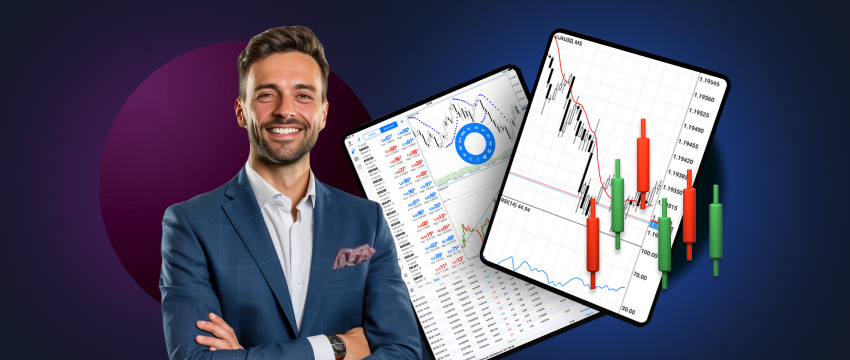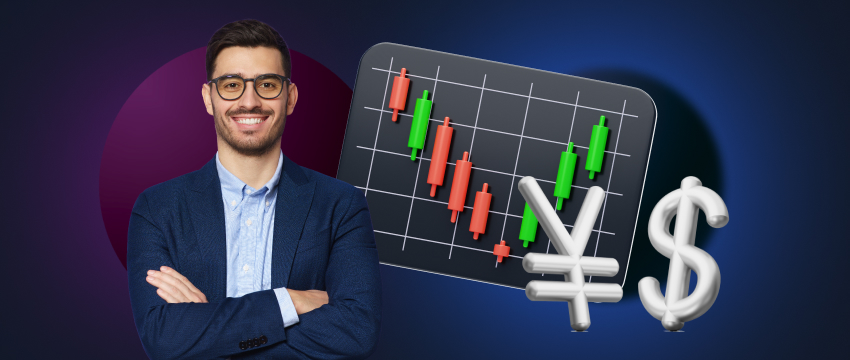Day trading is exciting and rewarding, but it is tiresome, rigorous, and demands the proper information to excel. As a beginner in the learning experience may be overwhelming at first. To effectively trade stocks, forex, or cryptocurrencies, you need a strong foundation. This article walks you through fundamentals, basic strategies, tools needed, and risk management methods to provide you with all you need to get started in this dynamic space.
What is Day Trading?
Day trading is the activity of buying and selling financial instruments in a single day to take advantage of short-term price fluctuations. In contrast to long-term investors, who retain ownership for months or years, day traders seek to take advantage of quick price movements using real-time data and analysis in making decisions.
Typical Markets for Day Trading
Stocks – Shares in publicly companies.
Forex – Currency pairs on the foreign exchange market.
Cryptocurrencies – Virtual currencies like Bitcoin and Ethereum.
Is Day Trading for You?
Before entering, you need to determine whether you have the proper mental mindset and skills. Successful day traders need to be able to adapt to changes in the market and make decisions immediately with strict deadlines.

Key Traits of a Successful Day Trader:
- Discipline – Staying disciplined in the execution of a well-planned strategy, even when emotions are high.
- Risk Awareness – Recognizing that losses are part of trading and knowing how to manage them.
- Emotional Control – Avoiding emotional decisions based on greed or fear.
If you enjoy indulging in analyzing market trends, responding fast, and efficiently managing financial risks can work well for you.
What You Need to Know Before You Start
To move effectively, you need to know some fundamental principles.
1. Basic Trading Terms:
- Bid & Ask Prices – The highest that one is willing to pay as a buyer versus the lowest that a person is willing to accept as a seller.
- Spread – The difference between the ask and bid price.
- Utilisez des outils – Borrowing money to increase the size of your position.
- Pips – The smallest unit of price movement in forex.
2. Basic vs. Technical Analysis:
- Fondamentaux – Examines assets in relation to economic news, company earnings, and news developments.
- Technical Analysis – Utilizes charts, patterns, and signs to predict forthcoming price action.
Knowing these will help you to be better.
Keys & Resources Required to Day Trade
You’ll want the right resources and tools in order to get started:
- Platforms – MetaTrader 4/5, ThinkorSwim, and TradingView are some of the popular options.
- Brokerage Account – Choose a broker with decent fees and fast trade execution.
- Educational Materials – Books, online tutorials, and YouTube tutorials can be useful study materials.
- Demo Account – Practice with virtual money first before risking real capital.
Getting Started with Day Trading
To learn and gain confidence, do the following:
Step 1: Learn the Fundamentals
Begin by reading the basics of trading. You may read A Beginner’s Guide to Forex and The New Trading for a Living by Dr. Alexander Elder.
Step 2: Start with a Demo Trading Account
A demo account allows you to practice sending orders and try different strategies at zero risk of monetary loss.
Step 3: Master the Primary Indicators
- Familiarize yourself with key indicators, such as
Moving Averages – Helps to find trends. - Relative Strength Index (RSI) – Identifies momentum and potential overbought or oversold conditions.
- MACD (Moving Average Convergence Divergence) – Indicates potential buy and sell signals.

Step 4: Design a Simple Trading Plan
A straightforward strategy that an individual can execute should include:
Applying moving averages to spot trends. A wait for pullbacks in prices at significant support or resistance areas. Entering into trades based on confirmation signals. Positioning stop-loss and take-profit levels in order to manage risk.
Step 5: Maintain a Trading Journal
Recording your moves on paper will help you improve. Record:
- Entry & exit points.
- Profits & losses.
- Lessons learned with every trade.
Risk Management & Trading Psychology
Safeguarding your capital is one of the most crucial aspects of trading. Following are the most critical risk management techniques:
- Never Risk More Than 2% Per Trade – It prevents significant losses and preserves your money.
- Always Use Stop-Loss Orders – Automatically closes trades at a predetermined loss level.
- Prevent Overtrading – Stick to your strategy and avoid emotional decisions.
Managing Emotions When Trading
Emotional discipline is the secret to long-term success. Watch out for these typical mistakes:
- Revenge Trading – Impulsive moves to recoup losses.
- FOMO (Fear of Missing Out) – Hasty moves without sufficient analysis.
Patience and a planned approach will render you a better trader.

Most Common Beginner’s Mistakes (and How to Avoid Them)
- Trading Real Money Too Soon – Wait until you’re prepared with a demo account.
- Go Without a Plan – Always have a clear plan prior to entering trades.
- Risk Management Overlooked – Never do any action without a stop-loss in place.
- Allowing Emotions to Guide Decisions – Use logic and strategy instead of deciding emotionally.
By avoiding these pitfalls, you’ll be setting yourself up for long-term success.
From Demo Trading to Live Trading
Once you can profit consistently in a demo account, you can proceed to live trading. Start with small amounts, follow your risk management plan, and gradually increase the size of your position as you gain confidence.
Final Thoughts
It requires patience, practice, and discipline to become a day trader. Providing a strong basis, appropriate instruments, and systemic strategies, it is possible for you to be on top of challenges without fear. Continue learning, become patient, and perfect your art in the due course to realize improved chances at long-term achievement.
CLAUSE DE NON-RESPONSABILITÉ : Ces informations ne sont pas considérées comme des conseils ou des recommandations en matière d'investissement, mais plutôt comme une communication commerciale.





